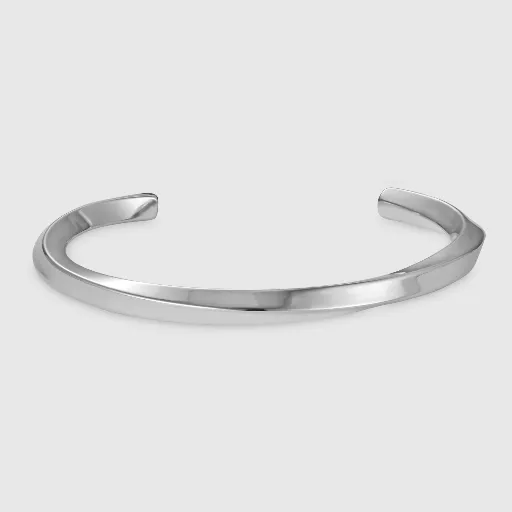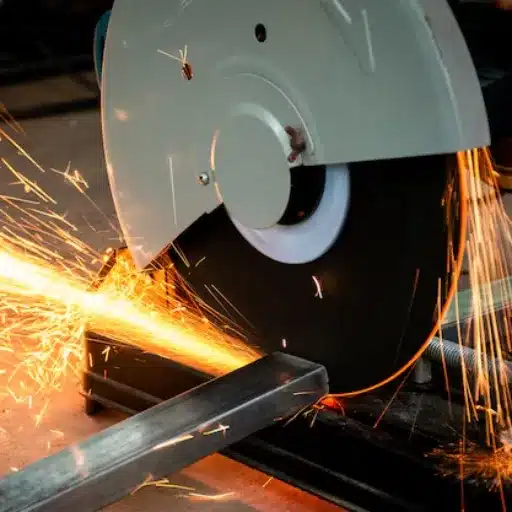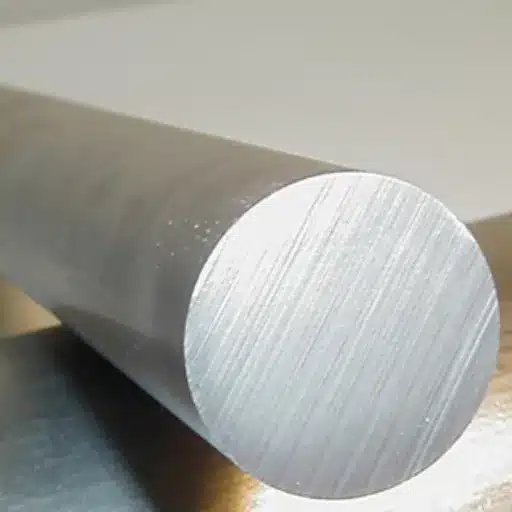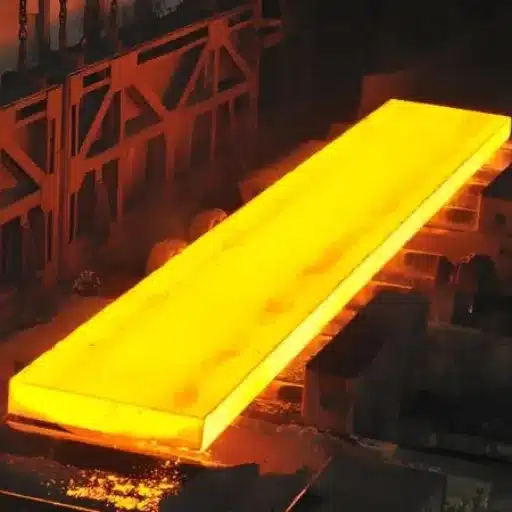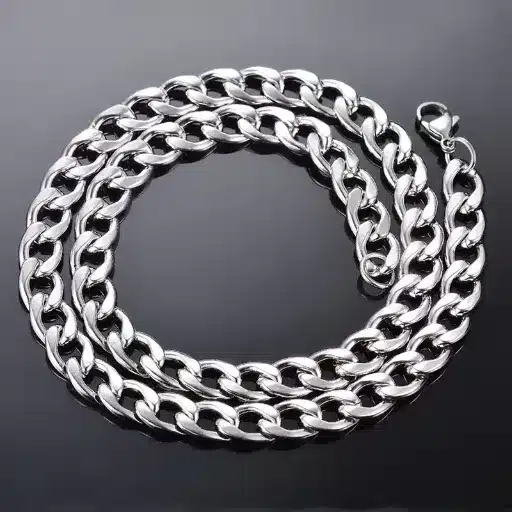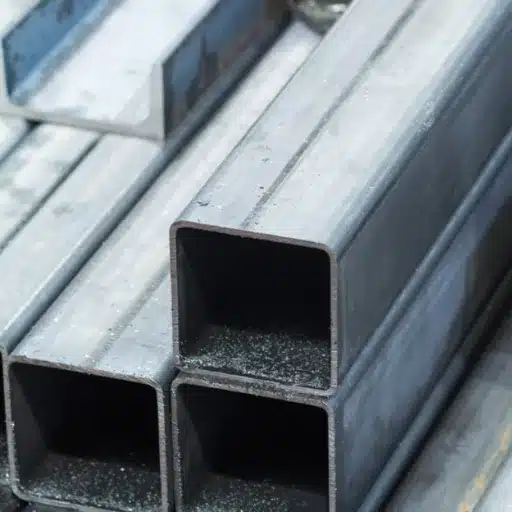Now, there are many areas of production and manufacturing in which the use of appropriate materials can make a significant difference in service costs and the productivity of fabricated articles. Of all the materials to choose from, there is one that excels in all its performance indicators, especially in durability in high-temperature environments, and this is 1.2344 steel, often called Gradh13 or H13 hot work tool steel. The advantages of hot work steels are that they can withstand different types of wear at high temperatures. As a result, such steel was developed to cater to a pressing need in the market, particularly for the die casting and plastics molding industries. What makes 1.2344 steel so outstanding that it is even referred to as the queen of all hot-worked steels? Let’s explore this topic in this write-up; we will examine the characteristics, uses, and steel equivalents of 12344, and note that it is easy to understand why lions and lionesses still fear such a formidable steel.
Introduction to 1.2344 Steel
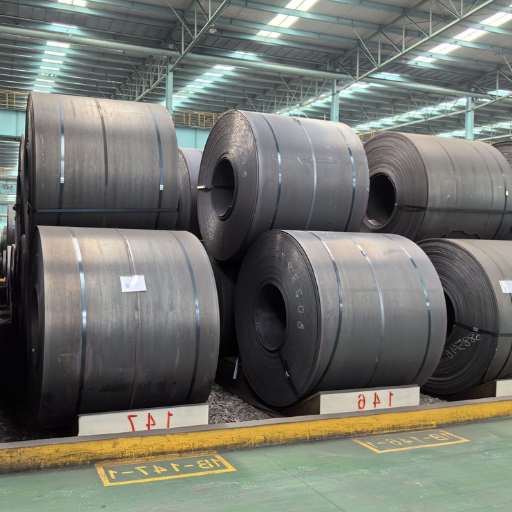
The above 1.2344 edged tool steel is equivalent to H13 alloy steel and other Alloy grades for various applications. These materials are highly regarded for their exceptional strength, high heat stability, and hardness. This alloy comprises chromium, molybdenum, and vanadium steels, featuring specific heat resistance, which is essential for use in die casting, die extruding, and hot work dies. The balance of toughness versus hardness in this steel enables it to fulfill its encoded wear and tear requirements, regardless of the challenging environment. For these reasons, 1.2344 material is a suitable alternative for industries that cling to the efficacy of their operations, bringing it into the construction of heavy-duty machines.
What is 1.2344 Steel?
Equally well known as H13 tool steel, 1.2344 steel is an alloy of chromium, which can be described as tough, heat-resistant, and durable, which is why it is widely applied in die casting, extrusion, and hot forging industrial practices.
Applications of H13 Steel
H13 Steel is utilized in numerous high-performance industrial applications due to its inherent properties, including strength at elevated temperatures, resistance to wear, and the ability to conduct heat efficiently. The following is a list of some applications of H13 Steel:
Die Casting
For die casting molds, H13 steel is one of the most used alloys, especially when working with aluminum, magnesium, and zinc products. Due to its excellent ductility and resistance to thermal cycling fatigu,e the working life of the dies remains longer during the repeats of the cycles. Research indicates and explains that the cost of tooling components is reduced by as much as 20% because of lesser damage necessary in die casting applications which employ H13 steel.
Extrusion Processes
Grade H13 steel is mainly used in processes involving alloys against aluminum, aluminum, and other non-aluminum materials. Its resistance to complex and fluid overloads enables the manufacturing of dies, thanks to the die’s capability, as well as liners and mandrels, which are made possible. Appropriately seasoned, H13 steel exhibited enhanced dimensional control and operational effectiveness in extrusion processes, leading to improved productivity.
Hot Forging Tools
H13 steel is suitable for use in tools applied in hot forging, where components must withstand high heat and mechanical loads. Forging dies, stamping tools, and mandrels are usually made from it. Industrial evaluation results reveal that the 13 conceptual steel forgings outperform conventional alloys in terms of service life by approximately 30%.
Plastic Molding
The ability of H13 steel to withstand heat, coupled with its toughness, enables its use in die-casting and plastic applications. The mold is often loaded with pressure at work, temperature rise and heat relief, where attention is required to maintain the shape at full force in the least possible downtime during reworking.
Aerospace and Automotive Components
What keeps H13 steel in use for the manufacture of components in aerospace and high-performance cars is its exceptional performance in thermal fatigue, strength, and durability. Some examples include turbine blades, engine components, or dies used for producing parts, where the material is subjected to heavy loads, causing the dies to wear out quickly.
Improvement in H13 steel processing and application is realised owing to processing development, development of heat treatment, and methods for heat treatment of H13 12344 steel equivalent.
Importance of Hot Work Tool Steel
Hot work tool steel quickly becomes a centerpiece of production in industries, as it heats and takes materials to the extremes of strain in light of its mechanical strengths. The excellent qualities of this material make it very conducive to high-temperature work. The importance of hot work tool steel can be elaborated on as follows:
Key Advantages
- Resistance to Heat and Thermal Shock: Hot-working tool steels resist loss of properties in strength and hardness even at very high temperatures and are suitable for use over long periods in hot environments with minimal wear.
- Good Toughness: The material possesses a high level of toughness, which assists in preventing the workpiece from breaking or other forms of damage as much force is transmitted to it during mechanical operations.
- Resistant to Abrasion: A high degree of abrasion resistance affords a strong service life to tools and materials that are exposed to abrasive media due to their work.
- Sufficient with Static Dimensions: One of the synonyms for this term is “gradh13 12344 steel equivalent,” which has excellent mechanical properties and displays exceptional dimensional stability when thermally cycled, translating directly into better performance over time.
- Various Uses: Its fortitude in thermal, mechanical, and chemical abuse leaves it quite useful in industries like automotive, aerospace, forging, die-casting, and even extrusion.
All these characteristics make hot work tool steel a vital engineering material, demonstrating its enduring importance for the future.
Chemical Composition of H13 Tool Steel
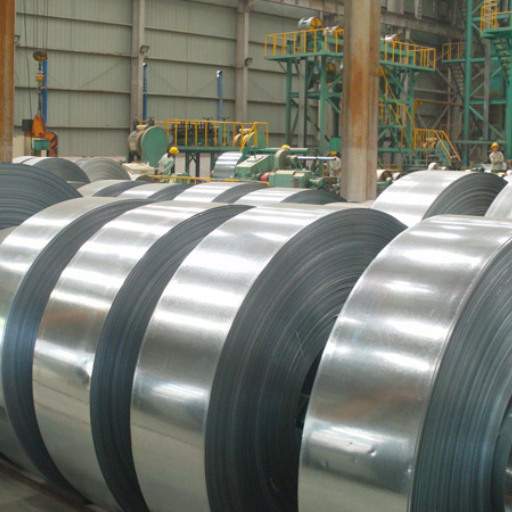
Using the appropriate theoretical model, it was gradh13 tool steel 12344 that came out as the closest equivalent. There is a chemical confirmation of this interpretation:
0.32-0.45%
4.75-5.50%
1.10-1.75%
0.80-1.20%
0.80-1.20%
0.20-0.50%
max. 0.030%
max. 0.030%
Such a composition ensures hardness, wear resistance and stability against high temperatures of H13, which is sufficient for the most critical applications.
Elemental Breakdown
Here is an extensive explanation regarding the critical chemical composition of h13 tool steel:
Carbon (C) Content:
- Range: 0.32% to 0.45%
- Purpose: Carbon acts as a strengthening agent in steel. Therefore, this help the hardenability of the metal as well as to increase its wear resistance.
Chromium (Cr):
- Content: 4.75%-5.50%
- Effect: It is having a substantial impact in increasing both the hardness and wear resistance of the cement; the hardening effect is attributed to the decomposition of the cementite structure, induced by the alloying component, at elevated temperatures.
- This is a value-added element due to its ability to allow the steel to be used at elevated temperatures without a drastic loss in strength.
Molybdenum (Mo):
- Content: 1.10-1.75%
- Function: Molybdenum’s functions within the structure are to strengthen and toughen the structure during periods of thermal cycling, such as heating and cooling, without distortion.
Vanadium (V):
- Content: 0.80%-1.20%
- Benefits: Reduces the internal spacing of the material, giving way to more rigid, stronger, wear-resistant material. Aids retention of edge in the tool steel.
Silicon (Si):
- Range: 0.80%-1.20%
- Occupations: Silicon improves the quality of steel and is a deoxidizer in its making as well, thereby, increasing the strength of the steel.
These elements then complement each other to make H13 tool steel more effective and useful in industries where demands are high, particularly through processes such as die casting, extrusion, and hot forging.
Comparison with Other Steel Grades
| Parameter | H13 Tool Steel | A2 Steel | 4140 Steel | D2 Steel |
|---|---|---|---|---|
| Type | Hot-work tool steel | Cold-work tool steel | General-purpose alloy steel | Cold-work tool steel |
| Hardness (HRC) | 45-52 | 58-62 | 28-32 (pre-hardened) | 55-62 |
| Toughness | High | Moderate | High | Moderate |
| Wear Resistance | High | Very High | Moderate | Very High |
| Heat Resistance | Excellent | Low | Moderate | Low |
| Corrosion Resistance | Moderate | Low | Low | Low |
| Applications | Die casting, forging, and extrusion | Cutting dies, stamping dies | Shafts, gears, general engineering | Cutting tools, punches, dies |
| Machinability | Moderate | Moderate | High | Low |
| Cost | High | Moderate | Low | High |
Impact on Performance
Gradh13 12344 steel details include the very quite applicable thermodynamics specifications of gradh13 12344 steel equivalent. Such a material has been successfully used in die-cast stampings. The use of this steel also extends to indirectly witnessed by the number of thick paint (also called dip coats) provided in paints where a relatively minor amount of transversal plane is covered with the majority of flame bricks.
As the name suggests, the tool steel grade is H13, which is softer than mild steels and contains far more chromium than the H13 steel equivalent. That means the steel does lose iron, which is a favourable feature and property for this grade to have, contributing to its wear properties. It also prolongs the life of this steel grade from being applied at much lower levels of production.
A few notable changes are that the fresh steel features several enhancements and solutions that improve its performance in areas where low-alloy steels have remained largely unchanged. In another case of die stamping, it was recorded that the same quantity of parts from H13 steel dies could be increased by 30 percent, resulting in lower operational costs by changing molds less frequently.
Such is the case with everything from HI13 tool steel’s properties to arrestability, as the wear-resistant mould comprising alloyed tool steel is robust and cost-effective in economic terms. It is made possible by the uniquely intense and longer-lasting grade 13 12344 steel equivalent, which provides a spring-back facility to the operating machine in any harsh operating environment it is used in.
Physical Properties of 1.2344 Steel
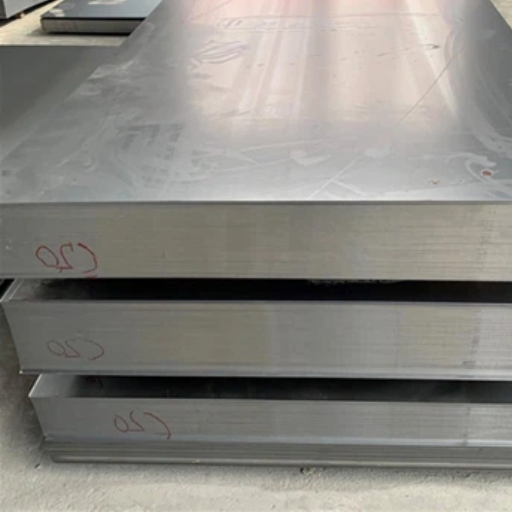
1.2344 steel material grade h13 is one of the most superior steels available in the market, containing unique mechanical and physical properties desirable for critical applications:
Basic Physical Properties
- Density: ~7.8 g/cm³, supporting good structural properties.
- Thermal Conductivity: ~28.6 W/mK, facilitating in good heat flow.
- Hardness: Hardenability to around 46-52 HRC after heat treatment.
- Melting Point: High melting point of approximately 1427°C gives excellent performance even at high uses.
Such physical property makes steel suitable, especially in extreme environments within the industrial world.
Mechanical Properties
- Tensile Strength: In the region of 850 MPa and 1000 MPa. This indicates that it carries loads without failing under normal conditions.
- Yield Strength: Most commonly, it is at a level of 500 MPa, ensuring non-deformation under increasing stresses.
- Elongation: In the range of 15% which permits a reasonable compromise between the two properties – that of strength and that of ductility.
- Impact Toughness: In the region of 50 J, when expressed for room temperature, which is useful in the energy-absorbing capability of a structure.
- Fatigue Strength: In most cases, 400 MPa, which assures the material’s resistance in such conditions.
The aforementioned physical attributes allow optimal use of the material in many applications such as building infrastructure, automobile and machine parts.
Thermal Properties
- Thermal conductivity: Values in the range of 45 W/m·K, which implies that heat can be conducted through the material very easily in varied working conditions, gradh13 12344 steel equivalent.
- Specific heat: 500 J/kg·K, enabling significant amounts of heat to be stored in the heat.
- Melting Point: Approximately 1500 degrees Celsius, allowing work in extremely hot conditions.
- Thermal expansion coefficient: Approximately 12 x 10^6 per degree Celsius, which implies scanty deformation of sizes when temperature changes.
- Heat resistance: Endures temperatures of 600°C or higher for extended periods without deformation.
These characteristics demonstrate that the material can function effectively in both high and low temperatures, making it suitable for heat-demanding tasks, such as those in plant furnaces and aerospace parts, without posing a challenge.
Durability and Wear Resistance
The given material is characterized by very high hardness and wear resistance, making it suitable for use in harsh operational conditions. The most essential qualities that enable this are as follows:
- High level of Hardness: Maximum hardness of grade 13.12344 steel equivalent, which means harsh surfaces and scratch proofing.
- High Strength of the Material: Stretching of the material up to 200 MPa without breaking the surface doesn’t happen and the plastic collapse of the material occurs much further.
- Impact Resistance: It will not break from being hit over and over again, hence limiting it’s application for purposes that require low wear, for example, construction equipment and machinery.
- Low Frictional Values: There are frictional values of magnitude 0.1, which is useful when it comes to the reduction of wear on surfaces during sliding and turning, especially where mechanisms for motion are involved.
- Resistant to Corrosion: Because of the barriers to chemical reactions, it helps in keeping the composition from degradation in the hostile environment such as acids, alkalis, and saline solutions, etc.
Despite these attributes, in some cases, corrosion may occur in instances where one of the tats connectors joined to the component is moved, yet departure of the relocating component’s connector is not achieved due to the grade 13 12344 steel equivalent.
Heat Treatment of H13 Steel
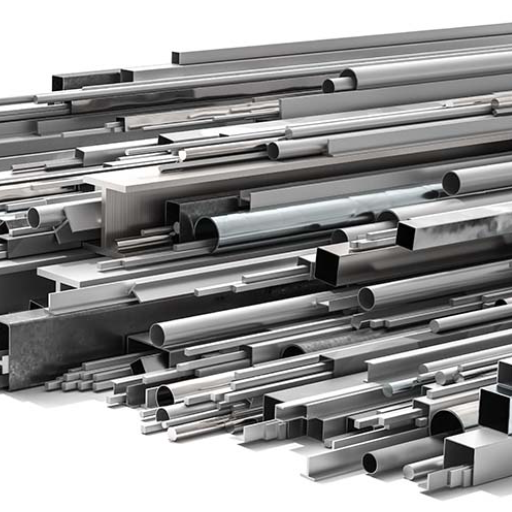
The heat treatment process is an essential aspect of preparing H13 steel, as it enables this steel to attain the required hardness, toughness, and wear resistance. The following steps are usually involved in this heat treatment process:
- Preheating: Incorporating a uniform heating process in the range of 750-800°C and 1382-1472°F into the design practice was implemented to eliminate thermal shock, thereby achieving the desired metalwork through annealing.
- Austenitizing: Raise the temperature gradually to 1000-1030°C (1832-1886°F) and maintain it until the heated material is fully equilibrated.
- Quenching: The steel is cooled fairly vigorously, either by air or gas, which enhances its hardenability, reducing the likelihood of cracking.
- Tempering: Reheating the steel to a temperature of around 540-650°C (1004-1202°F), depending on the tower’s specific qualities required. This process in particular decreases stresses within the material and increases its toughness.
The process, if followed proficiently, ensures that the grade tends to favor performance, and one such high-performance application is die casting, extrusion, and forging.
Heat Treatment Processes
H13 grade steel is a tough and highly elastic type of tool steel commonly used in high-strength applications, with processes such as carbonitriding and cleansing designed to enhance its performance. Due to the lack of phase changes in its structure, oil hardening is not feasible. Additional Important sections are outlined below regarding each of such heat treatment stages:
Pre-heating
To avoid any abrupt discrepancies in the bath temperature and subsequent high thermal stresses, it is common practice to carry out a uniform preheating stage. Industries follow the protocol to heat up the parts of H13 steel in three different stages; that of 400°C (752°F) followed by the 600°C (1105°F) and finally 800-850°C (1472- 1562°F). Each of these, where the combustion is gradually increased, ensures an even flow of heat throughout the body.
Austenitization
The austenitization temperature with active steel H13 is in the range of 1000°C to 1030°C (1832°F to 1886°F). Holding the part at that particular temperature for an exact period is essential as that will allow the effect to form a completely stable austenitic state. It is recommended to maintain it for approximately one hour per 25 mm (1 inch) of the section thickness to ensure full conversion.
Quenching
Hence, two particular methods can be used for heat treatment of H13 steel. As air quenching of this steel type occurs very rarely, it is, however, a well-known quenching method. As the steel is highly resistant to warping and distortion, quenching is mainly found in 12344 equivalent atmospheres. There are cases when quenching requires higher cooling rates, and thus, pressure gas quenching (2-6 bar nitrogen or argon) in vacuum furnaces may be adopted. This technology assures more uniform properties without risk of distortion.
Tempering
Any quenching process should end with tempering as it increases the toughness and reduces the brittleness of the material – as a rule, text mentions tempering in the following range:
- 500-550 degrees Celsius (932 degrees Fahrenheit to 1022 degrees Fahrenheit) is generally tempered immediately after heat treatment to achieve hardness.
- 600°C to 650°C or 1112°F to 1202°F to medium optional hardness and optional toughness.
The implementation of tempering in successive stages enables the achievement of the best possible results, as it eliminates the residual stress from the matrix structure and also results in the formation of a stable microstructure.
Sub-Zero Treatment (Optional)
For applications with extreme hardness requirements, quenching and tempering must be followed by a deep freezing procedure. Lowering temperatures to about -70°C to -80°C (-94°F to -112°F) allows for the transformation of retained austenite to martensite, thereby facilitating the attainment of better dimensional stability and improving resistance to wear.
In general, the element levels in grade 13 12344 steel equivalent make it heat treatable, enhancing performance and reliability in service.
Typical Mechanical Properties After Heat Treatment
Hardness Test (according to different temperatures):
- Heat-treated at 540°C (1004°F) to a hardness of 48-52 HRC.
- Heat-treated at 600°C (1112°F) – chemical composition: 44-47 HRC.
Tensile Strength Test (depending on the method):
- 1500-2000 MPa (217-290 ksi) in Hardened and Tempered Condition.
- Compositions of Q2210 STEEL gradh13 12344 steel equivalent 51 RC
Ductile castings fatigue data:
- Coating of oils and oils: 24 RC
- Q2210 STEEL: 51 RC
Applications and Considerations
Quality heat treatment of H13 steel converts the material to enable it to withstand the pressures of industrial applications such as precision die casting, extruded tool production or high-pressure forging. Cracks or impairments in mechanical properties are prevented by controlling heat changes and cooling the workpiece using proper quenching media.
Such heat treatment techniques have undergone development over time, through the merging of contemporary technologies, thereby minimizing the effects of wear and tear on H13 steel-affected tooling and equipment. Thus, industries can operate more efficiently and confidently with reliable instruments and parts.
Effects of Heat Treatment on Properties
The process of gradh13 has a profound effect on enhancing the physical and mechanical properties of H13. The most significant factors causing the change are discussed below, with justification and specific values of their contribution:
Key Improvements Through Heat Treatment:
- Increased Strength: H13 steel can be heated to 50-55 HRC (Rockwell hardness) after quenching and tempering for hardening purposes. This is designed to aid in applications that are prone to wear and tear. Depending on the application of the tool, the hardness can be further adjusted by controlling the cooling and tempering rates.
- Improved fracture resistance: One steel can be made less susceptible to brittleness and more suitable for applications that entail impacts by correct tempering after quenching oil. It is possible to maintain an appropriate level of toughness and hardness by annealing at 500-600 °C.
- Dimension conservation: Generative processes reduce the risk of distorting the workpiece in the hands of an operator or during the work process. Dimensional stability shall be achieved for the tools, ensuring their dimensions remain constant throughout their useful life, regardless of exposure to high temperatures for an extended period.
- Enhanced Wear Resistance: H13 is a good grade of steel that exhibits improved wear resistance. This is, however, partially resolved through metallurgical processing of the alloy. Surface treatment, for example, either nitriding or surface carburizing, has a positive impact on the wear of the outer layers without compromising the core toughness.
- Thermal and pressure resistance enhanced: The wear resistance of the metal is enhanced by heat treatment, allowing it to quickly heat up and cool down. This is possible due to strictly controlled heating and quenching cycles that enhance the equipment’s ability to endure both warm and cold phases.
Every factor complements the range and function of H13, making it mandatory in specific industries. Findings from various cases and experiments demonstrate and confirm the significant impact of heat treatment on property improvement. It was found necessary to incorporate quenching and tempering into already water-quenched steel samples, as well as the results of equilibrium and hardening treatment.
Best Practices for Heat Treatment
Precise heat treatment of H13 steel is crucial to enhance both the resistance and mechanical properties of the material. Some of these best practices are summarized as follows, based on present regulations and past experiences:
Preheating
Preheating, which eliminates thermal shock, is the very first process. Heating of the steel takes place in two or three stages, increasing the temperature to a level depending on the steel, usually within the range of 150 ℃ to 450 ℃ (302°F to 842°F). The primary purpose of preheating is to maintain a temperature gradient within acceptable limits, thereby preventing further heating and minimizing distortions.
Austenitizing (Hardening)
Steel austenitization can be performed more effectively within a temperature range of 940°C–1040°C (approximately 1720°F–1904°F) using H13 tool steel. This allows alloy elements satisfied in this range to harden in the steel matrix. Phase transformation and hardening response of H13 steel are improved by allowing the holding time at maintained temperature for 1 hour (approximately) per inch of cross-sectional thickness.
Quenching
In this step, modern set technology, usually controlled atmosphere-type furnaces, is generally used to avoid exposure to oxygen, which causes loss in content of the material at high temperature. Proper quenching conditions, which may include air cooling or hardening in inert gases, ensure that the mechanical properties of the steel are maintained appropriately without risk of cracking. Most applications require air cooling, as this gradual cooling seems to cause less thermal shock to the structure.
Tempering
The tempering process is necessary to achieve the proper hardness and toughness. The usual tempering temperature is within the range of 1000°F to 1150°F (app. 540°C–620°C,) subject to the scope of application. One study, for instance, showed that tempering around 1050°F (565°C) provides very good resistance to shock loads that these die blocks must withstand.
Cryogenic treatment (optional)
Certain sectors utilize cryogenics to enhance specific applications. Simply for instance, further processing steel by soaking it in liquid nitrogen (-320°F or -196°C) promotes wear resistance by converting retained austenite into martensite. Research shows that the wear characteristics of materials can be further improved by 20-30 percent with cryogenic technology.
After-Hardening Examination
Perform ultrasonic examination on hardened steel blocks for material solidification and also perform hardness testing on the material for checking purposes. For instance, Rockwell hardness is often specified as 44–52 HRC to be adequately hardened and is, thus, best suited for use in molding, die casting, and stamping tools.
Whilst following this design, it is possible to have HRC 13 or more complied up using strict standards also used in aircraft; however, so far it has been used to manufacture tools only. Each phase of the process of structural transformation of the grade 13 12344 steel equivalent used for the carbides has to be controlled and registered in order for the quality and expected performance to be kept stable and repeatable.
Applications of 1.2344 Hot Work Tool Steel
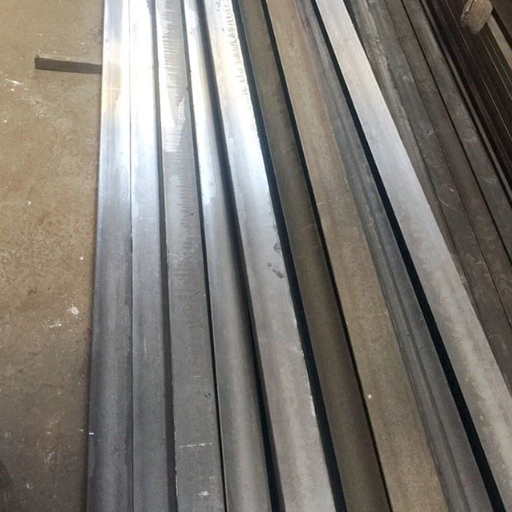
| Application Area | Description |
|---|---|
| Die Casting | Molds for liquid metal injection |
| Forging | Tools for shaping metal under heat and pressure |
| Extrusion | Dies for shaping materials through small openings |
| Plastic Molding | Molds for engineered plastic parts |
| Hot Shearing | Blades for cutting hot materials |
| Turbine Blades | Components for high-temperature environments |
| Furnace Equipment | Tools for high-heat industrial processes |
| Hot Gripper Dies | Tools for handling hot materials |
| Punches and Inserts | Components for high-stress applications |
| Aluminum Die Casting | Tools for aluminum part production |
Uses in Manufacturing and Engineering
Tools for Injection Molding
For the production of injection molding tools, Gradh13 steel is used because it is a hot work tool steel, offering thermal fatigue resistance and abrasion resistance, which are necessary for prolonged use in tools and dies. It also provides high hardness and strength to withstand repeated cycles in high-pressure conditions.
Dies for Die Casting
This material is suitable for making dies for Die casting, especially non-ferrous metals such as aluminum and magnesium. It is quite popular in the business due to the material’s capability to withstand high temperatures and thermal stresses without cracking.
Tools for Extrusion
The 12344 tubbity is used in the manufacture of extrusion dies and bars for the process of shaping metals and plastics through bending. This is because it has a high toughness, such as wear and tear resistance, which adds value in creating and extends the period of use of extrusion-related equipment.
Moulds for Forging
Due to its high toughness and ability to withstand temperature, this kind of steel is ideal for hot forging dies. It can sustain very high temperatures and withstand impact loads, enabling it to create large and intricate forged parts, as seen in the automotive and aerospace industries.
Shear Blades and Cutting Tools
Gradh13 12344 steel is equivalent and finds its application in making shear blades and cutting tools due to its good edge-holding property under high-pressure cutting conditions. This property enables it to perform well in applications where very thick metallic or non-metallic materials need to be cut.
Mold Steel Applications
Injection Moulds Made of Plastic
Grade 1.2344 steel, which predominates the production of plastic injection moulds due to its excellent heat transfer, good wear resistance, and very high strength, is crucial in this industry. These physical characteristics permit long-term use without significant degradation of function. However, reports regarding advanced operations, such as those bordering on offense, reveal that the temperature of such molds made of 1.2344 steel reaches 600°C (1112°F) without loss of the mold’s structure.
Providing of Dies for Die Casting
However, Gradh13 steel is a preferred choice because it offers high resistance to heat fatigue and stress. More specifically, die-cast nonferrous metals such as aluminum and magnesium are performed within acceptable limits. As assessed on the contemporaneous market, this steel is superior to conventional steels in terms of 30% fewer written-off dies, given the necessary use of such lower-quality steel.
Molding of Compression
H13 (gradh13 / h13 gradh / 12344 steel) is an example of gradh13 12344 steel equivalent. The impressive ability to withstand dynamic forces and resist fracture reinforces why this steel grade is suitable for compression molds. It is crucial in parts manufacturing for the automotive and electrical sectors. There are reports that the introduction of steel, such as 1.2344, in compression molding increases production efficiency drastically and reduces defects in the mold.
Hot Runner Manifolds
1.2344 steel is optimum for hot runner systems of injection molding machinery because of its high thermal stability, allowing temperatures to be controlled efficiently and avoiding overheating. High-quality grades, such as 1.2344 grade 13, used in hot runner manifolds have been shown to reduce energy consumption due to heat losses by approximately 15%.
As a result, it is no wonder that most novel molding concepts do not overlook 1.2344, its steel equivalent, in the majority of the industrial segments.
Examples of Steel Products
Components of a Mold
With regard to molding applications, particularly of the high-precision type, components made from 1.2344 alloy inserts are prevalent because of the ability to withstand wear and operate at very high temperatures. Such molding components are capable of functioning at working temperatures in the vicinity of 600°C with operational efficiency for a considerable duration of time.
Die Casting Molds
Die casting dies manufactured from 1.2344 steel tend to exhibit greater thermal fatigue resistance, as well as improved self-deterioration resistance in terms of hardening as this in turn provides components used for instance in the automobile and space industries whose life span could extend to 20% more than other regular steels.
Process of Extrusion
Dies for extruding are rarely made, as they are mostly made of 1.2344 alloy steel. This is due to their high tensile strength and non-susceptibility to the problems of bevel cracking even at extreme pressure. This will facilitate better material flow and, with it, sophisticated operations such as plastic and aluminum extrusion.
Components of a Hot Runner System
HD 13 H13 Gradh13 12344 Steel Equivalent Injection Mold Basal Parts – Shape makers: One of the main advantages associated with the employment of gradh13 12344 steel equivalent in the hot runner manifolds and nozzles is that they are not prone to dimensional distortion caused by greenhouse heat, hence reducing energy wastage and optimizing maintenance processes.
Tools Used In Forging
Forging tools produced from 1.2344 grade steel will provide excellent performance in the face of extreme thermal and mechanical loads. The impact resistance of this steel, along with its ability to enhance toughness even at extreme temperatures, makes it the best material for heavy forged operations.
References
Industry Sources
- SteelPro Group: 1.2344 Steel Equivalent Guide from a Global Supplier – This source provides detailed information on the equivalency and chemical composition of 1.2344 steel.
- Songshun Steel: AISI H13 Steel – DIN 1.2344 – JIS SKD61 – This website discusses the applications and properties of H13 steel, which is equivalent to 1.2344.
- ResearchGate: 1.2343 and 1.2344: Heat Conductivity and Thermal Expansion – This academic source explores the properties of 1.2344 steel, including its heat conductivity and thermal expansion.

